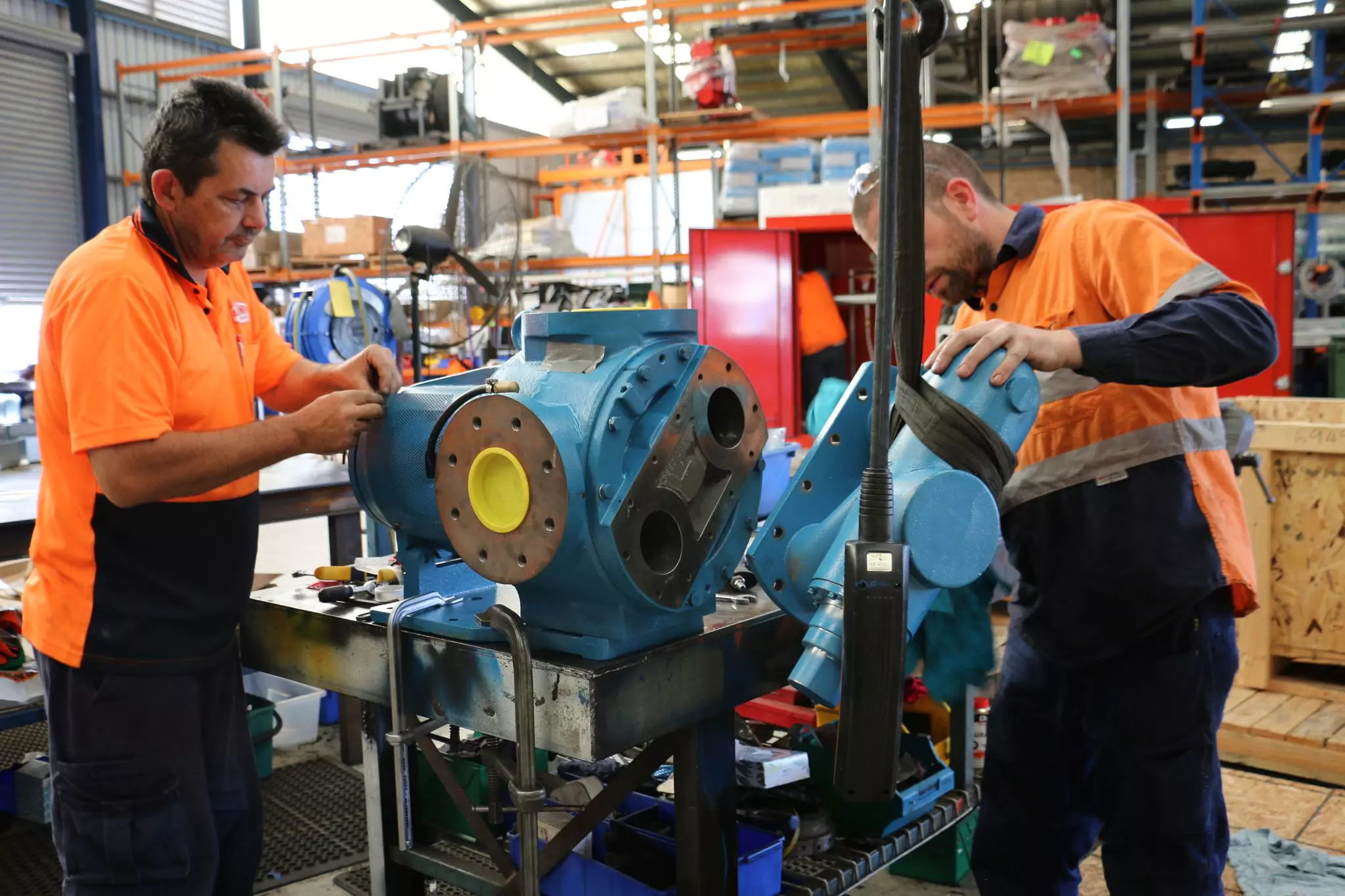
You’ll enjoy the All-Pumps experience. We’re certain.
Maintenance Capabilities
Maintenance Capabilities
Resources
Submersible borehole pumps are a type of submersible pump. They are centrifugal pumps driven by a submersible motor. As they usually draw in the fluid directly without a suction line, they must constantly be submerged in the fluid handled. Submersible borehole pumps are designed as single-stage or multistage pumps which are rigidly coupled to the submersible or encapsulated motor.
Borehole pumps are more cost-efficient than deep-well turbine pumps, especially for large installation depths, as their rising mains have a simpler design.
A suction strainer is fitted between the pump and the motor. Depending on the requirements, the pump casing, impellers and diffusers are made of cast iron, bronze, aluminium multi-alloy bronze, chrome nickel steel or plastic.
Schematically, centrifugal pumps consist of an impeller/s that rotates inside a casing. The impeller comprises a series of blades, preferably of a radial design, which transmit kinetic energy to the fluid being pumped. The casing is equipped with suction and discharge nozzles for the fluid being pumped. The suction nozzle has an axis that corresponds with the impeller’s rotational axis, while the discharge nozzle has a normal axis to the impeller axis, but still lying on the plane passing through the axis itself.
Borehole pumps are centrifugal pumps that are coupled with a motor before being submerged under the ground. Each pump set consists of three parts: the motor housing, the pump body, and the suction grid. The motor housing steers the pump body, allowing it to pump water, which enters it through the suction grid. The pump body is fitted with several impellers. The more impellers, the higher the pressure and flow rate it can provide. After passing through the impellers, the water will exit the pump through the delivery outlet. A hose/pipe can be connected to the delivery outlet, through which water can be pumped under high pressure.